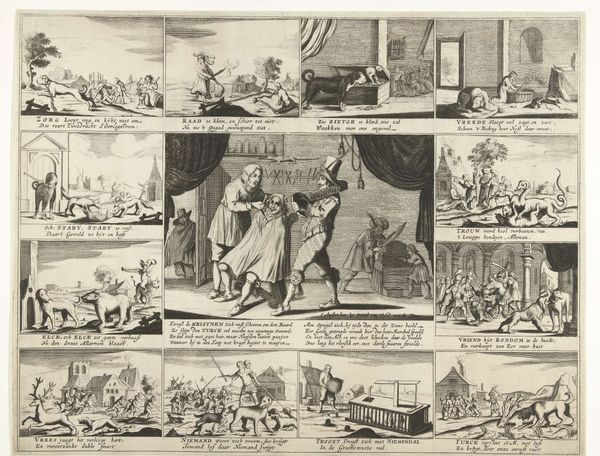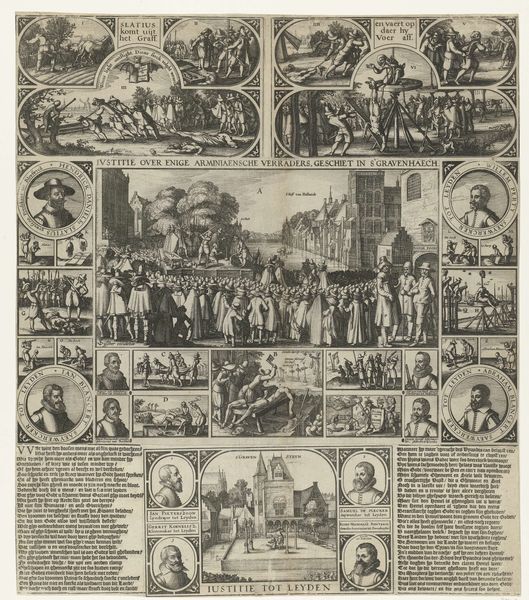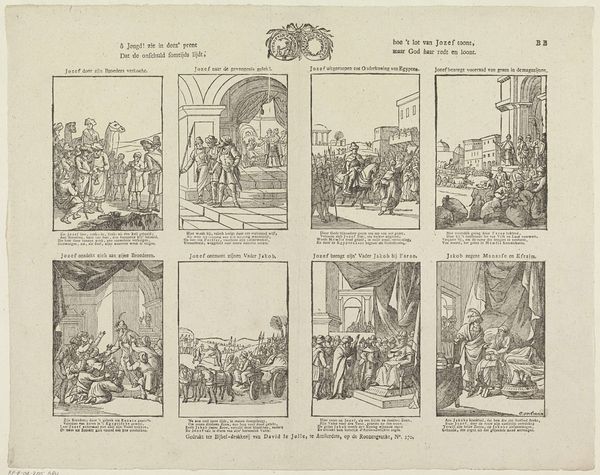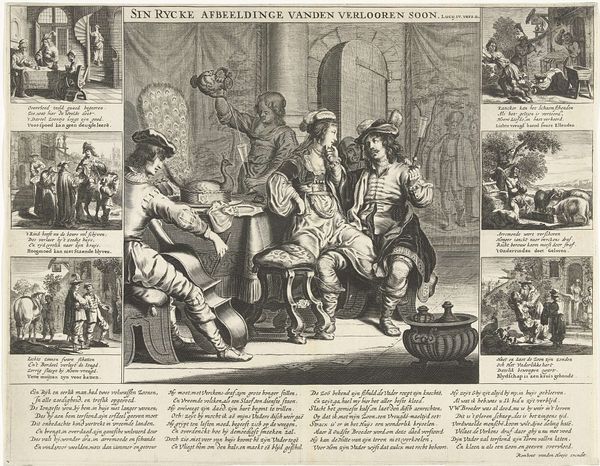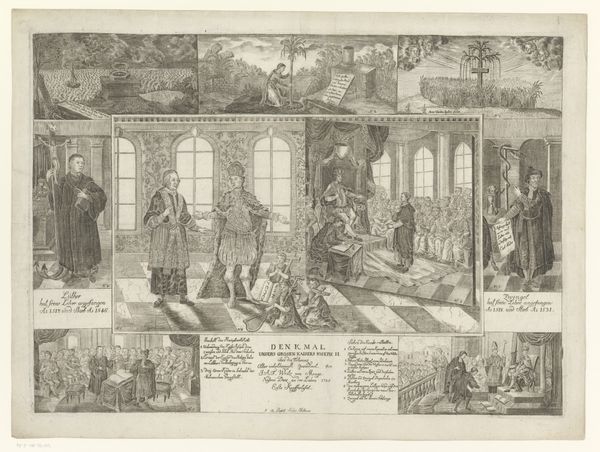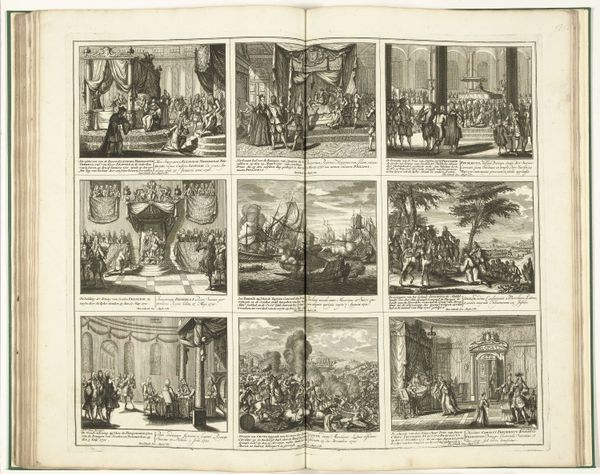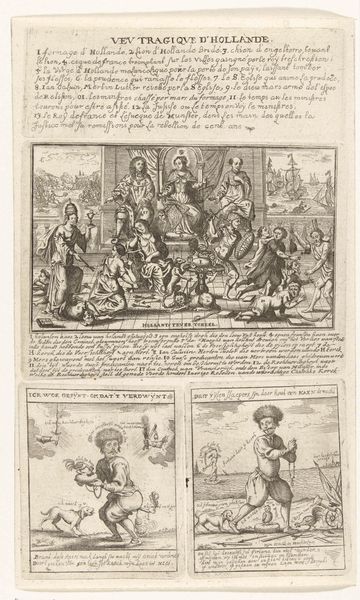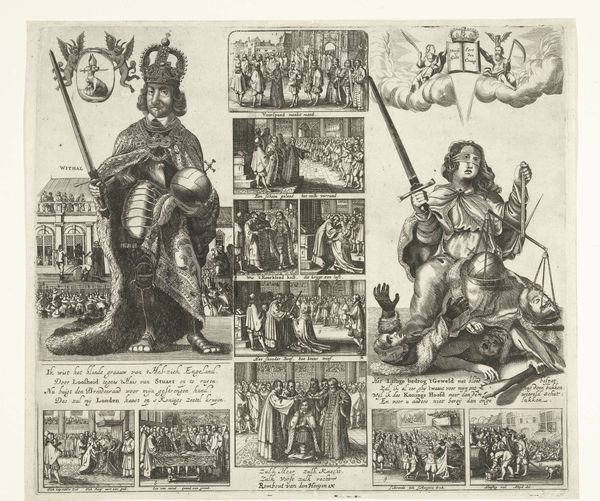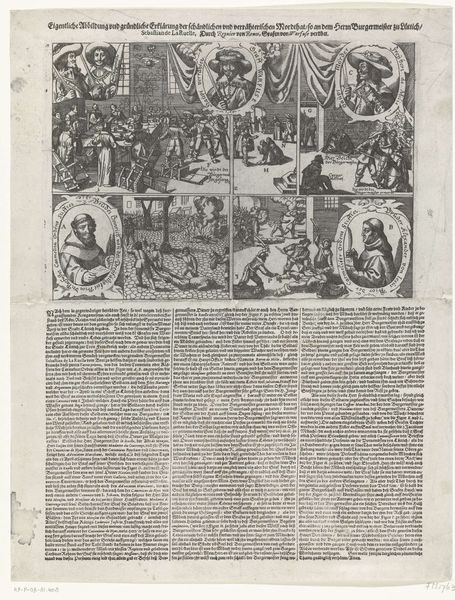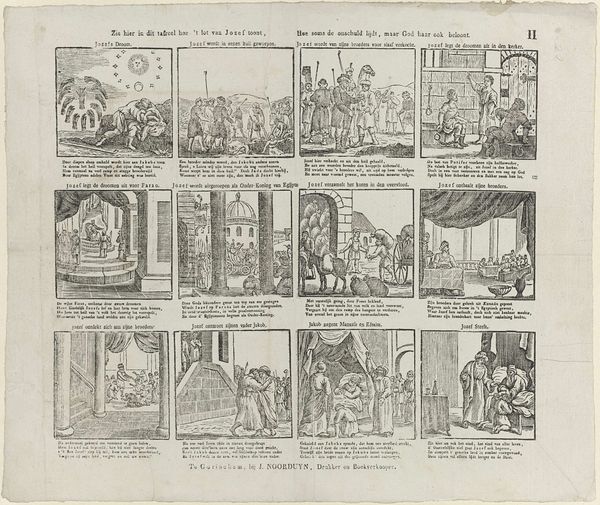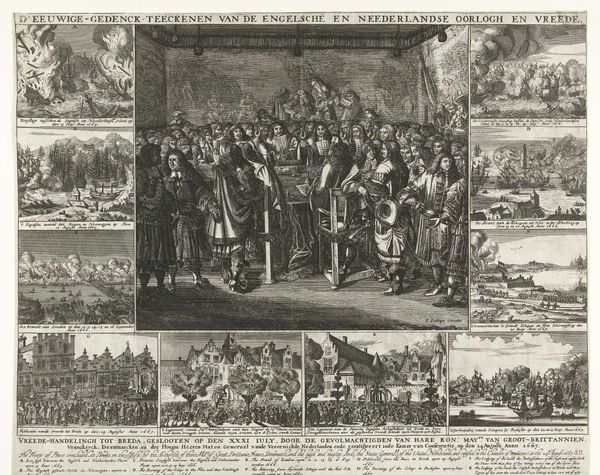
#
comic strip sketch
#
aged paper
#
mechanical pen drawing
#
old engraving style
#
traditional media
#
personal sketchbook
#
pen-ink sketch
#
pen work
#
sketchbook drawing
#
storyboard and sketchbook work
Dimensions: height 371 mm, width 455 mm
Copyright: Rijks Museum: Open Domain
Curator: This engraving, titled "Allegorieën op het misbruik van het procederen," dates roughly from 1600 to 1633, and it is held in the Rijksmuseum. The artist is, alas, anonymous. Editor: It gives me the feeling of a cautionary tale, laid out in sequential panels. The aged paper adds to that sense, like an antique broadside warning against some terrible societal ill. Curator: Precisely. The visual layout resembles a comic strip, detailing various allegories related to the abuse of legal procedures. The linear nature guides the viewer through each stage of what seems like a descent into chaos. Notice how the composition uses strong contrasts and varied figures to convey the dense subject matter. The artist really packed the imagery together. Editor: Looking closer, I am struck by the uniformity of line and form; the mechanical quality, the limited scope of tonal values, the sheer production value involved... considering this piece comes from the early 17th century, that suggests widespread appeal. Legal abuses were clearly on a lot of people’s minds. Curator: Legal battles were part of the daily experiences. The institutional role of justice, fairness, equity in this timeframe all contribute to its social impact. It serves as a public condemnation of the legal system of that time. Editor: The images really hammer home this criticism; there is clear intent for broad viewership—a visual sermon against corrupt legal proceedings in order to spark social discourse, maybe even some action. I mean, is there any evidence to determine which public this image targeted? Curator: Most of its viewers came from the bourgeois public. The proliferation of similar pamphlets at the time allowed ordinary individuals to access previously restricted knowledge. And the location that they lived in—for instance, Amsterdam—made it a place in which images like that proliferated at the moment. Editor: This has revealed the vital importance of graphic design in conveying ideas, specifically the political dimensions and production contexts, which provide us an overview of cultural commentary for public good in times of upheaval. Curator: Absolutely. It shows that sometimes art plays a significant public role by reflecting social issues back to its target audience. I'm more aware of the engraving's significance by this collaborative consideration.
Comments
No comments
Be the first to comment and join the conversation on the ultimate creative platform.
